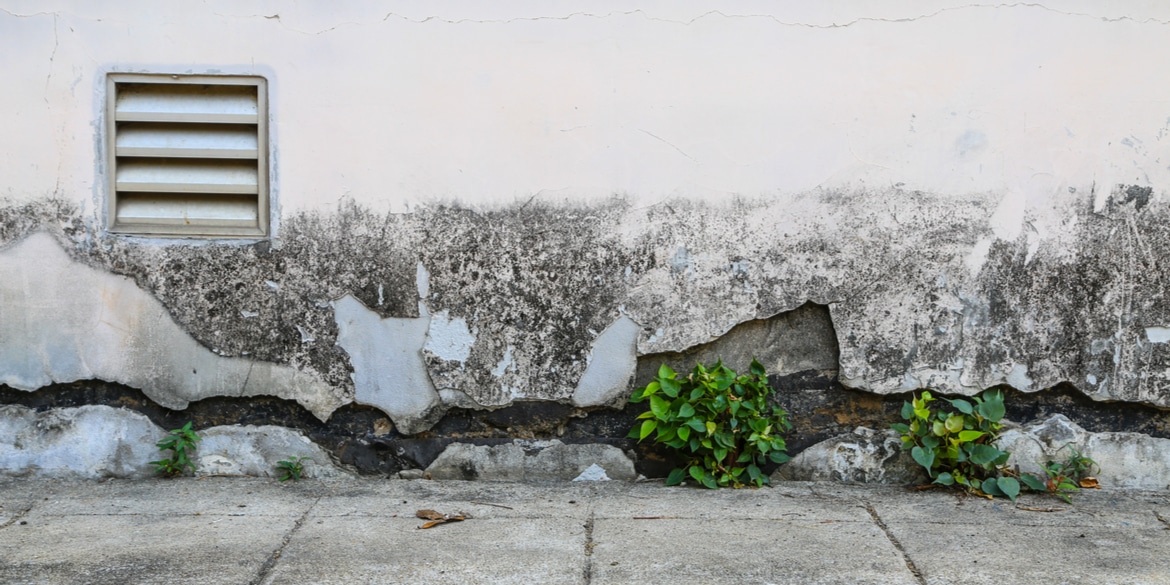We have covered the common signs of subsidence in our ‘what to do if you suspect subsidence’ blog. Here we look at 4 common causes of subsidence in more detail and how to minimise their impact on your property.
Subsidence occurs when the ground beneath a property moves or sinks. This movement means the property is no longer supported in the same way so can reposition and move as it adjusts. The first visible effects of subsidence are often new or expanding cracks in plaster work and outside brickwork and it’s important to get a professional diagnosis sooner rather than later in order for the subsidence to be officially diagnosed and rectified.
Causes of subsidence
- 1. Tree roots: Soil shrinkage can occur and can cause subsidence when trees and shrubs are planted too close to buildings. As the roots of the vegetation absorb water from the soil beneath the building, soil composites such as clay can shrink and cause movement in the ground. The biggest risks to this kind of movement exist when the root of a tree is equal to or greater than its height above ground level or a tree is particularly old so has a larger root network causing a greater effect on the sub soil. Oak and Poplar trees are thought to be species to be aware of.
- 2. Seasonal changes: Prolonged warm and dry spells can accelerate soil shrinkage as moisture removed by the tree root system is not replaced at a rate quick enough. In this situation, the tree or plant may expand its search for moisture by growing further beneath the ground. Similarly, extended periods of wet weather will saturate the soil. To help minimise subsidence caused in this way, trees should be trimmed to reduce water requirements and any new trees or shrubs should be planted far enough away from a building based on its expected root span at full size.
- 3. Damaged drainage and pipework: Leaking drains or water mains can wash away soil around them which can become a problem if the pipework has been laid too close to a building. Cracks in draining pipes can be caused by the building load above it, tree roots from vegetation seeking more water during dry periods, and of course inadequate movement joints in the construction of the piping. Drains near building should be checked regularly for damage and blockages and leaks dealt with promptly.
- 4. Soil composition: The composition of soil beneath buildings can affect the level of movement that may be experienced. For example, non-cohesive soils such as sand and gravel are susceptible to be washed away in regular water flow and soil containing organic matter is likely to compress easier and cause unpredictable cracking of buildings above. The The National House Building Council (NHBC) – suggest construction over poor landfill is the single largest case of foundation failure in new houses (over 50% of failures) and must be recognised that any landfill will be unstable for a long period of time (at least 25 years) so if built upon, appropriate foundation design must considered.
What to do if you suspect subsidence?
Instruct a Chartered Building Surveyor to inspect the property as soon as possible advising them of your concerns. They will conduct a thorough inspection of the building as a whole and the particular areas of concern before confirming if subsidence exists and advising of any remedial actions that need to be taken. You should also contact your insurance provider as you may be covered for the costs of the diagnosis and remedial works as part of your plan.
To find out more about the causes of subsidence and way to reduce their impact on your property, view our causes of subsidence blog.
Need advice or services?
We have an experienced building surveying team operating throughout London and the South of England. Use our contact form to get in touch.
Want to hear more?
If you found this article helpful and would like to receive more posts like this directly to your inbox, subscribe to receive our quarterly newsletter or follow us on twitter @KemptonCarr and like us on facebook to see them first.
